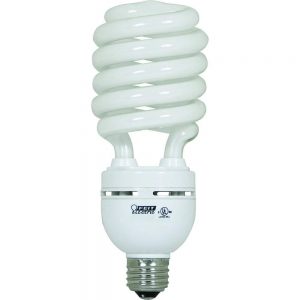
Outdoor Lighting Terms
In this post, we will learn some outdoor lighting terms with a definition and then how it applies to outdoor lighting. Our outdoor lighting terms are:
- Wattage
- Lumens
- Lux
- CFL
- LED
Wattage
Definition: The watt (symbol: W) is a unit of power. In the International System of Units (SI), it is defined as a derived unit of 1 joule per second and is used to quantify the rate of energy transfer.
https://en.wikipedia.org/wiki/Watt
In our case of outdoor lighting, wattage measures the amount of electricity a light bulb consumes. For example, a 100-watt bulb consumes 100 watts of electricity every second it is on. The higher the wattage, the more electricity you’ll pay for.
Lumens
Definition: The lumen (symbol: lm) is the SI derived unit of luminous flux, a measure of the total quantity of visible light emitted by a source. Lumens are related to lux in that one lux is one lumen per square meter.
https://en.wikipedia.org/wiki/Lumens
In regular terms, “Lumens” measures the intensity of light the human eye can see. So the amount of lumens you need for your outdoor lighting really depends on the kind of outdoor lighting you want.
That said, our professional suggestion on lumens for various outdoor lights includes:
- Path lighting:100-200 lumens
- Step lights: 12-100 lumens
- Floodlights: 700-1300 lumens
- Motion sensor lights: 300-700 lumens
- Pond/pool lights: 200-400 lumens
- Hardscape lights (on walls): 50-185
- Landscape: 50-300 lumens (50 is good for a garden or small shrubbery)
Lux
Definition: The lux (symbol: lx) is the SI derived unit of illuminance and luminous emittance, measuring luminous flux per unit area. It is equal to one lumen per square meter.
https://en.wikipedia.org/wiki/Lux
The term lux gives you an idea of the size of the area a particular light can illuminate. Lux is important as it tells you how many bulbs you’ll need to cover a particular area.
To give you an idea: 1 lux is equal to how much illumination a single candle can provide from approximately 3 feet away.
CFL
Compact Fluorescent Lightbulbs use an electrical current to heat up a filament inside the bulb. When the filament fully heats up it becomes white-hot which produces light and heat. Because of the sensitivity of the filament inside the bulb, a CFL’s lifespan is cut short if it’s left in extreme hot or cold ambient temperatures. These light bulbs also take a while to fully light up.
LED
Light Emitting Diodes use an electrical current that illuminates tiny diodes inside the bulb. LEDs don’t put out much heat, staying cool to the touch. They also fare well in all types of outdoor temperatures and become fully bright immediately.
LED vs CFL
Operational cost:
LEDs use 50% less energy than CFLs to produce the same amount of light. This means LEDs produce the highest amount of lumens per wattage consumed of all light bulb options.
Lifespan: LEDs last up to 5 times longer than CFLs.
Price: Currently, most CFLs are cheaper to purchase than LEDs. However, in the last couple of years, prices have been dropping on LED bulbs, making some more affordable than CFLs.



